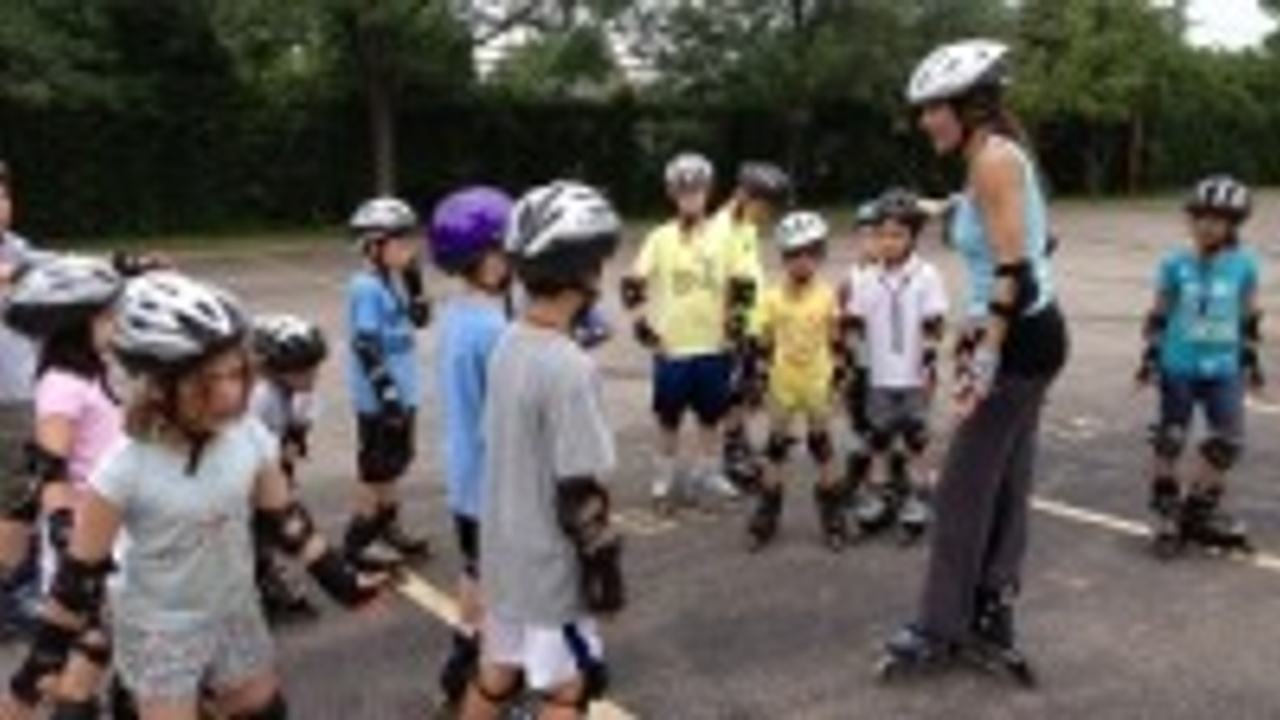
Exercising in the Heat with Children
Jul 09, 2013It is important to use caution when having children skate in hot weather. While skating or exercising should not necessarily stop when the temperature rises, certain precautions should be taken by instructors and parents prior and during the activity to avoid heat related illness. Children do not adapt to temperature extremes the same way that adults do so keep the following in mind:
1. Children have a higher surface area to body mass ratios then adults do. To put it another way, they have more skin area for heat to transfer into their bodies and have a decreased ability and efficiency to release the heat from their bodies.
2. When physically active, (Skating, running, walking, etc.) children produce more metabolic heat than adults do when engaging in a similar activity. However, as noted above, they are not as efficient as dealing with this excess heat.
3. Children’s ability to sweat is not at the same capacity as adults. Therefore they are unable to cool the body as quickly.
4. Due to a lowercardiac output andoxygen uptake the ability of the blood to move heat from the body’s core to the skin is reduced. Younger children do not pump as much blood per heart beat making it more difficult for blood to move toward the skin where it can be dissipated and cooled. Add children’s inefficient movement patterns when they are learning a new skill like skating, it is even more reason for caution.
5. Know the symptoms of heat stress illness:
- Heat Cramps (heat related muscle cramps): This is the least serious of the heat stress illnesses and can probably be prevented by warm-ups, proper fluid intake and replacement, and a diet that includes electrolyte replacements of sodium and potassium (think bananas and Gatorade) that are lost during exercise.
- Heat Exhaustion: Heat exhaustion is caused by excessive water loss from prolonged exercise or work. Symptoms include nausea, headache, fatigue, dizziness, and faintness as well as surprisingly, goose bumps and even chills. The skin will be cool and moist because the body’s cooling system is not working properly and the circulation has slowed.
- Heatstroke: commonly known also as Sunstroke: This is the most serious of the 3 heat related illnesses and can cause irreversible damage and even death. Heatstroke occurs during very intense exercise when the body’s heat production is significantly higher then the body’s ability to cool it. Body temperature can rise from a normal 98° F (36.6° C) to 105-110°F (40.5-43.3°C) within minutes after the body’s cooling mechanism shuts down. This rapid increase in body temperature can cause brain damage, permanent disability, and death! Common symptoms of heatstroke are dry hot, and usually red skin, very high body temperature, and a rapid heart rate.
If symptoms from any of the above heat related illnesses are observed stop the child from skating immediately. Move them to the shade or cool area and give them large amounts of cool liquid to drink.
The above physiological differences need to be taken into consideration when working with children as they give a distinct disadvantage to children when they exercising in a temperature that is higher than that of their skin. While it has been proven that individuals can acclimate to warmer climates, children however, seem to take up to twice as long as adults (Malina et al., 2004). The American Academy of Pediatrics (2000) offer the following guidelines for exercising children during hot days:
1. Reduce the intensity for activities lasting more than 15 minutes or when air or humidity levels are at or above critical levels.
2. At the beginning of a strenuous exercise session or after traveling to warmer climates, begin with lower intensity activities gradually increasing the intensity over a 10-14 day period so that students can adjust to the effects of heat. If this is not possible, decrease the children’s amount of participation time.
3. Be sure that children are hydrated 20-30 minutes PRIOR to an exercise session. During the activity, make time for water breaks ensuring that children drink approximately a 1/2 cup of water ever 20 minutes for a child weighing 40 kg or about 88 pounds. Children who weigh less can get away with less water, while children who are larger will need more.
4. Clothing should be lightweight, limited to one layer, and should be made of absorbent material to facilitate evaporation.
The American Academy of Pediatrics has identified children with the following conditions to be potentially high risk for heat stress:
- overweight
- children with a fever
- cystic fibrosis
- gastro-intestinal infection
- diabetes
- chronic heart failure
- caloric malnutrition
- anorexia nervosa
- sweating insufficiency syndrome
- intellectual disabilities
As certified instructors it is second nature for us to keep our students safe during lessons. Let the above be a reminder that safety goes beyond pads and gear!
References
Donatelle, R. J. (2009). Access to health, green edition. (Green ed.). New York: Benjamin-Cummings Pub Co.
Pangrazi, R. P., & Beighle, A. (2010). Dynamic physical education for elementary school children. (16 ed.). San Francisco: Benjamin-Cummings Pub Co.
|
|||
|

